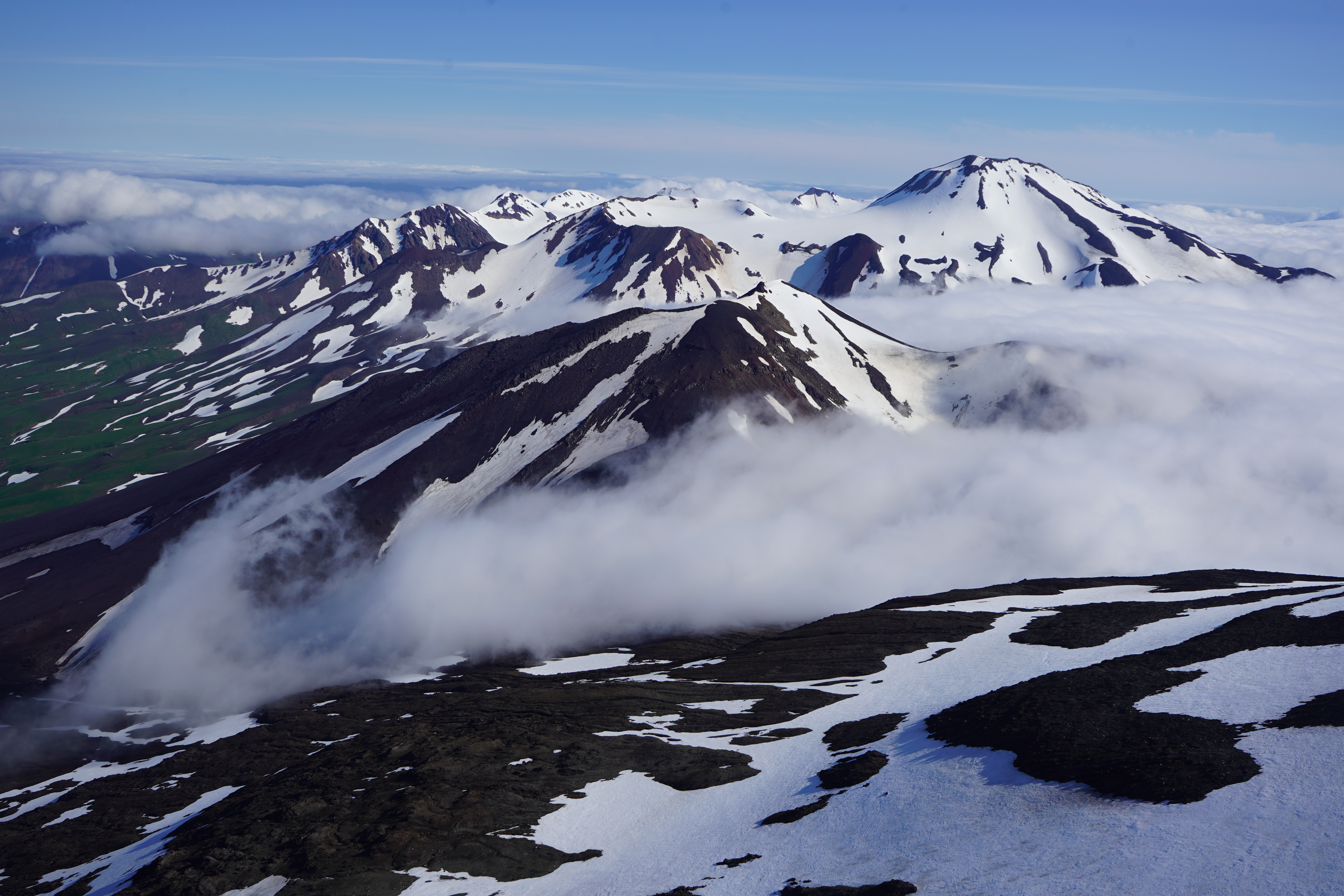Meet the Atka Volcanic Complex
What is the Atka Volcanic Complex?One of the largest volcanic centers in the central Aleutian Islands is on the north end of Atka Island, nearly 1,100 miles SW of Anchorage and just 10 miles north of the community of Atka. The southern portion of the island is older and composed of sedimentary, intrusive igneous, and much older volcanic rocks (more than 5 million years old).
The volcanically active northern portion of Atka Island is composed of a broad central shield, which once had a large cone that was lost to a caldera-forming eruption and is now home to several smaller volcanoes. The four largest are Korovin, Kliuchef, Sarichef and Konia. The compositions of lavas erupted at these volcanoes range from basalt to dacite.
Why one complex instead of four volcanoes?
A volcanic complex is a region of activity that can have many vents and a range of lava compositions. When instruments detect earthquake activity in such a region, it can be difficult, at first, to know which vent is associated with the unrest. At Atka, there is a large, older caldera after which came many smaller vents, some of which developed into stratovolcanoes.
Historically, Korovin volcano has been the source of most recent activity at Atka. South of Korovin, Mount Kliuchef was active as recently as 1812. In between them, the smaller cone Konia is at least as old as Korovin.
Korovin’s summit lake and fumarole field are frequently hot enough to be detected by satellite sensors, and Korovin has had eruptions of ash and lava on at least three occasions in the latter 20th century.

What’s happening now?
Seismic activity on August 10, 2021 prompted the Alaska Volcano Observatory to raise the color code and alert level at Atka volcanic complex to Yellow/Advisory. The seismic activity was not centered underneath any of the current vents, Korovin, Kliuchef, or Konia, but several kilometers to the west and southwest and three to six kilometers below the surface.
The earthquake rate has returned to background levels of activity following the swarm, and the Atka volcanic complex is currently at Green/Normal as of August 27, 2021. The Alaska Volcano Observatory will continue to monitor the Atka volcanic complex for signs of volcanic activity. The area is monitored by local seismic and infrasound sensors, satellite data, and regional lightning detection instruments.
